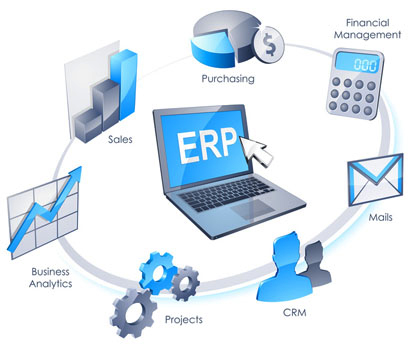“Enterprise software is dead!” Claims and predictions such as these have been doing the rounds of the cyber sphere since at least 2009. Is it really nearing its end? Let’s explore the answer, particularly in the context of modern enterprise software that leverages the power of cloud computing.
Isn’t off-premises enterprise software already the greatest thing that happened?
Well, in spite of all the advantages, enterprise software poses challenges, even if rendered via the cloud. Most enterprise software is designed keeping industry standard business practices and applications in mind. However, every enterprise works differently from even its closest match. This means that for every software implementation, the enterprise needs to adjust its ways of working according to what works with the software.

Customization within the software can accommodate all kinds of business-process deviations and specific applications. But it always comes with process changes that the business has to adjust to. Though cloud-based off-premises software helps enterprises mitigate pricing and scale challenges associated with enterprise software, it doesn’t address the needs of the people who use the software.
What does the enterprise think about it?

In a TrackVia study titled “Enterprise Software and the Wave Ahead,” a majority of respondents said that they had to change their way of working because of the software bought by their enterprise. Also, most executives remarked that enterprise software limitations negatively affected their organization’s growth.
Here are three major problems that executives, planners, decision makers, and directors face with existing enterprise software solutions.
- Lack of mobile compatibility
Enterprises are struggling with legacy software that does not support mobile applications seamlessly. Even the leaders of enterprise software markets are behind the game in terms of developing software that operates well on mobile devices.
- Multiple integration points creating multiple pain points
In many cases, enterprise software capabilities are limited in terms of the extent of customizations, hence requiring businesses to change their processes.
Also, enterprises face the problem of having to integrate more than one software solution to automate a single business process; for instance, an ERP system integrated with a third-party warehouse application, and the invoicing in ERP integrated with an external document management solution vendor. Breakage within these interfaces is a major disruption in the flow of routine business day operations.
- Software complexity
End-to-end software solutions are often complicated for the end users to understand and necessitate intensive and continuous user training. These steep learning curves dissuade employees from properly engaging with the technologies, which leaves massive software potential untapped.
Next up, let’s have a look at the forces that will drive innovation in enterprise software for the times to come.
The low-code software wave

The demand for low-code software solutions has experienced significant growth in the last few years, and low-code platforms have already passed the “early-adoption” phase. With no signs of slowing down, Forrester expects 68 percent revenue growth in this market by 2019 and an overall market size of $10.3 billion.
Executives are becoming more aware of and interested in this technology. In fact, many are already using it. With minimal setup and deployment times, minimum coding, lower risk profiles, and ease of customization, low-code applications are changing the way enterprises look at implementing IT tools for business goals.
Consumerization of corporate IT
Over the past years, the lines between consumer software and enterprise software have become increasingly blurred. This trend is called “consumerization” of enterprise software, and is defining the direction of the future of enterprise software as we know it.
When employees arrive in the office, they want the office software to look, feel, and work similar to the software they use on their personal computers. The growing shift from Outlook to Gmail for Business across organizations is living testimony to this fact.
The success of Google Drive, Dropbox, and Google Suite in the enterprise space explains how CIOs are recognizing and responding to the needs posed by consumerization of enterprise software.
When employees are provided software solutions they’re comfortable with and accustomed to using, efficiency, adoption, and productivity increase automatically. In a survey done by IDG Enterprise Consumerization, 90 percent of respondents said their enterprises had already adopted software like Google Drive, Dropbox, and even Facebook Business.
The incumbents of the enterprise software market have also shown the will to evolve the user experience and interface of traditional software such as ERP and CRM. This trend will be the driver of enterprise software innovation for the future; software that doesn’t make it easier for end users to get things done will face the risks of being pushed away and supplanted by more agile, dynamic, flexible, and “consumer-centric” software.
BYOD demands cross-platform compatible software
Smartphones, personal laptops, tablets, and even smart wearables are transforming the way employees work and access applications. Even shoes are getting smarter! Even pets have gadgets attached to them.
A research report from Gartner, in 2014, suggested that 70 percent of enterprises allowed employees to bring their own devices to work. That number has no doubt risen since then. BYOD is, in fact, closely linked to the software consumerization trend described above. More importantly, it gives CIOs tremendous opportunities to achieve cost savings and make employees more comfortable and efficient with the way they use work-related software apps.
Now you can use your own computer at work. As long as the work gets done, who cares what gadget you use to accomplish this! Your work does not care if you drive a car to work or a truck does it? Apparently some bosses may not care whose computer you use to accomplish daily tasks as well.
This is accompanied by a few challenges, though. With personal devices on employee desks, organizations feel a sense of lack of control. mobile device management technology (MDM) helps organizations get remote control over mobile devices, enabling them to install security packages on devices, control levels of access, manage role privileges, and a lot more.
BYOD and software consumerization have enough enterprise benefits to force enterprise software vendors to realign their development practices with the changing demands of organizations.
To make MDM succeed for BYOD, CIOs also need to be mindful of the security maturity, and make suitable investments to meet global IT security standards. Any data leakages, security breaches, and compromises of user information can cause expensive reputation and financial hits to the company. It can also get you fired!
For enterprise software vendors, the proliferation of BYOD means that traditional resource-heavy software will need to make way for low-code solutions that are compatible with a range of operating systems and device hardware specifications.
So, as to the question: Is the end of traditional enterprise software near? The answer: not really. Of course, enterprise software will need to evolve at a much faster pace, and align well with the expectations and business goals of enterprises that pay for these applications.
Photo credit: Flickr / jagerm



